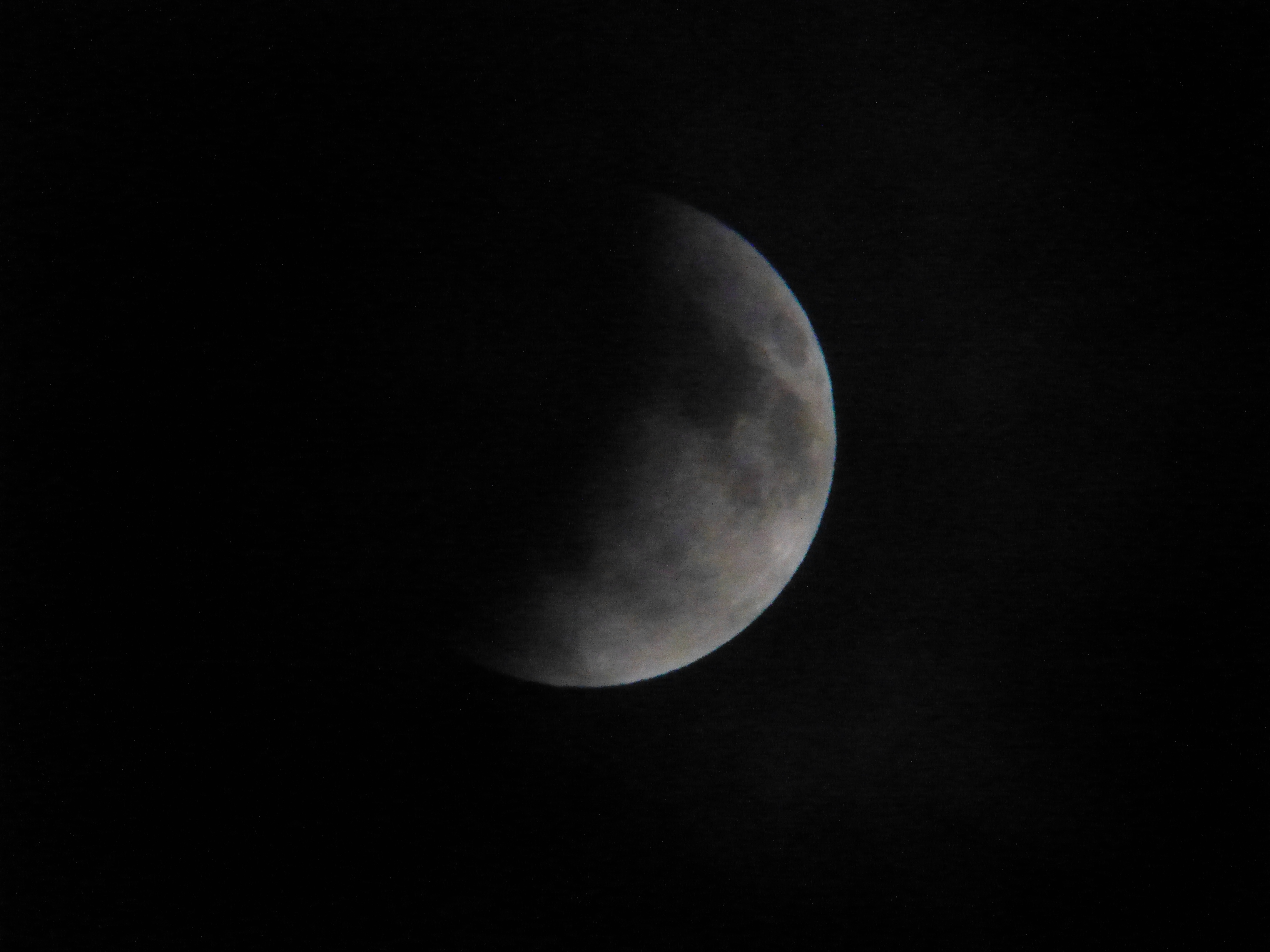By Allen Davis ’14

On April 15, 2014, the Americas were treated to a total lunar eclipse—an event in which the Moon’s orbit around the Earth brings it into Earth’s shadow, known as the umbra. Over the course of several hours, the umbra engulfed the full moon, transforming it from the familiar, brilliant white beacon, into an eerily glowing red orb. Even once it is completely covered by the Earth’s shadow, the Moon is still fainting illuminated by red sunlight that is bent by Earth’s atmosphere in a process known as refraction.
This photograph captures the beginning of the eclipse through a fleeting hole in the otherwise solid cloud cover over Williamstown, MA. We can see that the Earth’s large, circular umbra has already blotted out nearly half of the full moon, and it continues to creep across the lunar surface from left to right. Several features of the lunar surface are still visible. Most notably, the dark smudge slightly up and right of the center is an ancient lava plain called the Sea of Tranquility, where humanity first set foot on the Moon 44 years ago.
